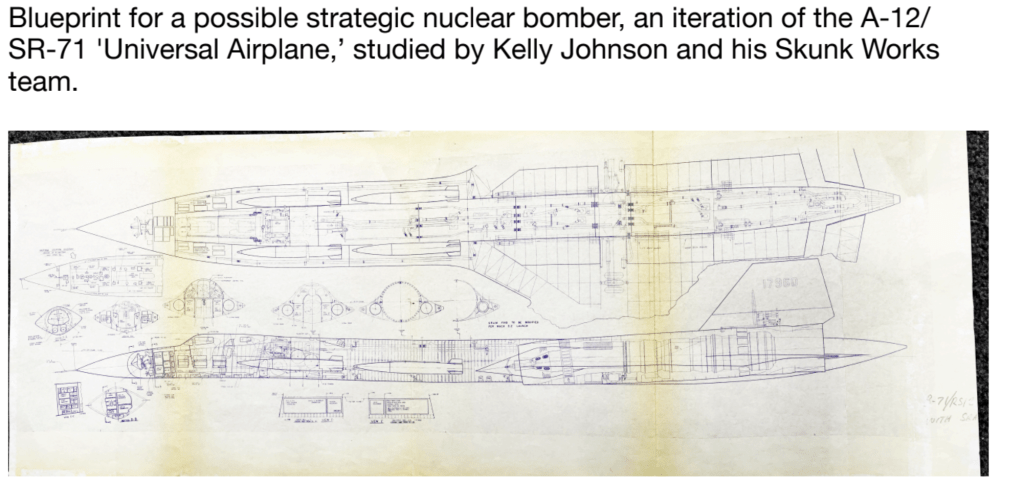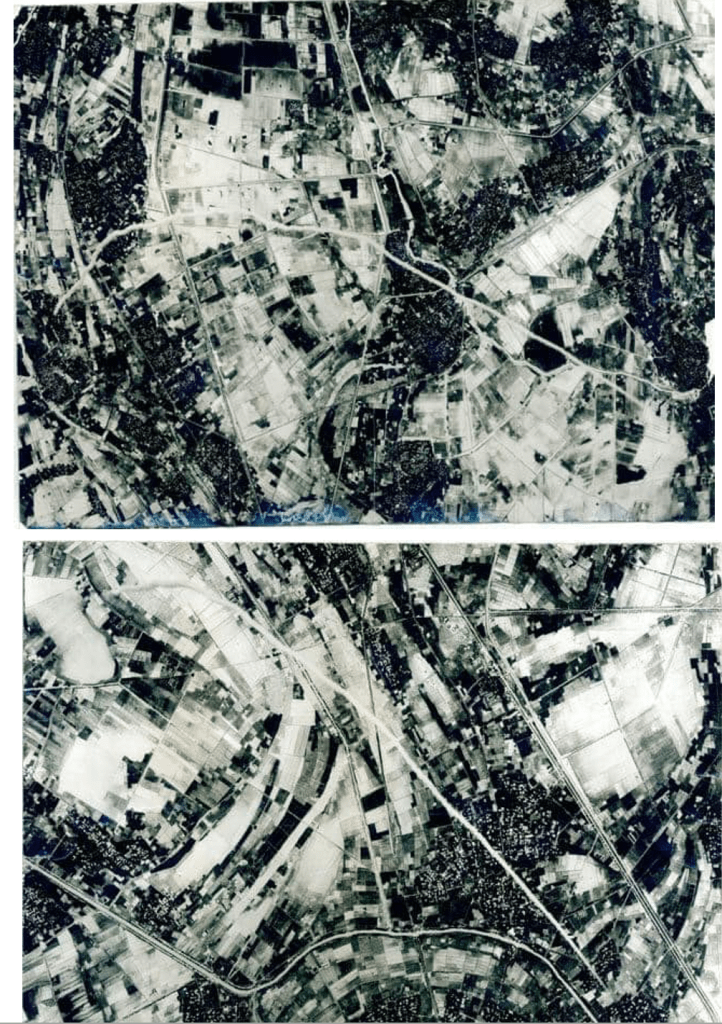I flew the SR-71 Blackbird in the Cold War, here’s why it was so important
SR-71 In the Cold War
By BC Thomas

The SR-71 has the deserved reputation of being the most unique air-breathing aircraft ever built. No other could fly as fast, as high, or carry thousands of pounds of equipment above 80,000 feet. It was the primary strategic reconnaissance asset for the Free World during the latter 25 years of the Cold War. The SR-71 could sustain continuous Mach 3+ flight for over an hour while obtaining the highest quality reconnaissance information from multiple sensors, and with aerial refueling, the aircraft could have circumnavigated the Earth in one flight. The aircraft was one of the first to employ stealth technology, thereby ensuring that the airplane was almost invisible to radar. Its speed and altitude also cloaked its presence. During this time of sparse reconnaissance satellite coverage over potential enemy targets, the SR-71 could sneak up, gather vital information, and leave the area without warning, and often without notice.

The SR-71 was never successfully intercepted by surface-to-air missile or aircraft. It had a state-of-the-art electronic defensive system which would defeat an incoming missile’s homing and steering. Detectors on board would alert the crew of a missile launch instantly and, since the SR-71 did not normally fly at its maximum speed or altitude, the aircraft’s defense was simultaneously to jam the missile’s guidance while accelerating, climbing, and turning with 45º of bank. No surface-to-air missile could out-turn, thus hit, an SR-71, a fact demonstrated many times, especially during the Vietnam War. Attempts to shoot down an SR-71 continued until August 25, 1981, which was the last time an enemy (North Korea) fired a surface-to-air missile at an SR-71; that mission was flown by Maury Rosenberg, pilot, and Ed McKim, Reconnaissance Systems Officer (RSO).
It missed.
We carried an array of sophisticated sensors and recorders which could glean reconnaissance data with cameras capable of high-quality photographs horizon-to-horizon. We also had radar imagery capable of one-foot resolution. This was the Advanced Synthetic Aperture Radar System (ASARS), which could deliver readable radar pictures night or day, bad weather or clear. I’m no photo interpreter, but even I could tell what was pictured. The SR-71 also carried electronic intelligence (ELINT) systems which are still classified. We advertised that the SR-71, within 24 hours notification, could be over any target on earth and be capable of surveying 100,000 square miles of terrain each hour. It was no idle boast.
The SR-71’s potential versatility is not widely known. Clarence ‘Kelly’ Johnson, the genius designer of all ‘Blackbirds’, was diligent in assuring that the Mach 3+ Blackbird aircraft could fulfil several roles, if needed for national contingencies. The first version was the A-12 aircraft, built for the Central Intelligence Agency (CIA). This was a single-person airplane and carried as principal sensor, one very high-resolution optical camera.

A differently capable aircraft was the YF-12, the Mach 3+ fighter/intercepter version of the Blackbird’s basic design. It was developed as part of Kelly Johnson’s “Universal Aircraft” concept of adapting the fore-body section to accept reconnaissance equipment, air-to-air missiles, or four nuclear weapons. Thus, the Mach 3+ Blackbird type could have been straight reconnaissance, a nuclear bomber, an interceptor, or recon/strike. There is at least one video, available to the public, which shows an actual missile launch from a YF-12 at Mach 3. I’ll add parenthetically that it was also outfitted to be a Mach 3 drone-launch vehicle, but the first test deployment of the D-21 drone failed and resulted in the loss of the Blackbird M-21 launch aircraft.

So it was versatile. But did it deliver?
By the late 1950s, we knew the Soviet Union had better, more capable rocket launch systems than any North Atlantic Treaty Organization (NATO) country. This was dramatically evidenced by two sudden leaps in Soviet advanced technology: 1957, Sputnik, the first artificial satellite; 1961, first man in space to orbit the Earth. These notable achievements shocked the people of the United States and indeed, the Western World.
Knowledge of the military and industrial strength of Communist states was extremely important, and reconnaissance missions against the Soviet Union started as early as 1947. Several American aircraft conducted these flights: the RB-29, RB-47, RB-50, C-130, PB4Y-2, U-2, and the Ryan 147 remotely piloted vehicle (RPV). Reconnaissance flights penetrated Soviet airspace, overflew the land mass, and many were shot down. The Los Angeles Times, 11/12/1992, reported that 40 such reconnaissance aircraft were lost and 200 American airmen died conducting these flights. That number of lost personnel was confirmed by Paul Glenshaw in his article: “Secret Causalities of the Cold War,” Smithsonian Air & Space Magazine, December 2017.
So aerial reconnaissance flights against potential enemies (the Soviet Union, China, North Korea, Cuba, the Middle East) were a top priority. These flights had to be conducted routinely and had to be survivable.
The SR-71 was developed to fill that need. From 1966 to 1990, the SR-71 flew over 3,500 operational reconnaissance missions while logging 11,000 hours in a flight environment which was most hostile: aircraft skin temperature averaged 620º F, outside air pressure was 0.4 pounds-per-square-inch (psi), altitude was 15-16 miles straight up, aerodynamic damping was low, and true airspeed was typically 2,000 to 2,100 miles-per-hour, making pitch controllability critical.
For operational survivability, the SR-71 was one of the safest military aircraft, as no Air Force crew member was killed while flying one, a testament to outstanding aircraft maintenance and crew training. A remarkable record given its extreme flight envelope and potential attack risk.
I’ll summarize the importance of the SR-71 missions by quoting Paul Crickmore, noted aviation historian and Blackbird author, in a letter to me.
“In theatre, the SR-71 proved the concept of high-Mach, high-altitude flight, to obtain vital aerial reconnaissance. The SR-71 regularly conducted reconnaissance missions in the skies over North Vietnam – particularly around Hanoi in 1968-70 which at the time, was the most highly defended area on the planet.”
“The Blackbirds provided superior flexibility compared to satellites, time after time, specific examples—Yom Kippur War 1973, Yemen 1979, Cuba 1977—1990, Lebanon October 1983 (following the truck-bomb attack killing over 240 US Marines), Libya 1986, The Persian Gulf 1987, but perhaps most importantly, the on-going monitoring of Soviet nuclear submarine fleets for the US Navy—particularly the Northern Fleet with their submarine-launched ballistic missiles (SLBMs), capable of hitting large areas of the United States, as well as all Allied Countries.”
“The simultaneous, synoptic coverage of information gathered by the SR-71’s sensors, provided the intelligence community and national leadership—with photographic imagery (PHOTINT), radar imagery (RADINT) and electronic intelligence (ELNT), that unquestionably helped to keep the Western World free.”
Richard H Graham, Colonel, USAF (ret) was an SR-71 Instructor Pilot, Squadron Commander, 9th Strategic Reconnaissance Wing Commander, and assigned to the Headquarters USAF (Pentagon) to supervise Programs and Resources as a Strategic Force Programmer. His evaluation of the SR-71’s worth as a reconnaissance asset is quoted from his book: “SR-71 The Complete Illustrated History of the Blackbird, The World’s Highest, Fastest Plane.”
“…the synoptic coverage (displaying conditions as they exist simultaneously over a broad area) provided by the SR-71 was far superior to satellite reconnaissance. Broad-area coverage from different approach angles, in a relatively short time span, produced considerably better intelligence than a predictable, single satellite pass, every ninety minutes. In 1990, the SR-71 was the only airborne reconnaissance platform that could penetrate hostile territory, accomplish wide-area synoptic coverage, and still survive. It could also be tasked reasonably quickly and had the element of surprise.”


Photographs of two SA-2 surface-to-air missiles which were launched against SR-71 #976, July 26, 1968 in the vicinity of Hanoi, Vietnam. Tony Bevacqua (Pilot), Jerry Crew (RSO).
Order the Hush-Kit Book of Warplanes here


Sadly, this site will pause operations in December if it does not hit its funding targets. If you’ve enjoyed an article you can donate here.


My favorite plane. When Lackland AFB got one, I had to go and touch it! Saw one take off after an air show at Randolph AFB. What am experience for this military brat!
Great stuff! We were younger then! Blackbird pilots , an unique group, brave servants! Great story from a Denison grad!
How could Viggen accompany SR71? With that difference in speed?